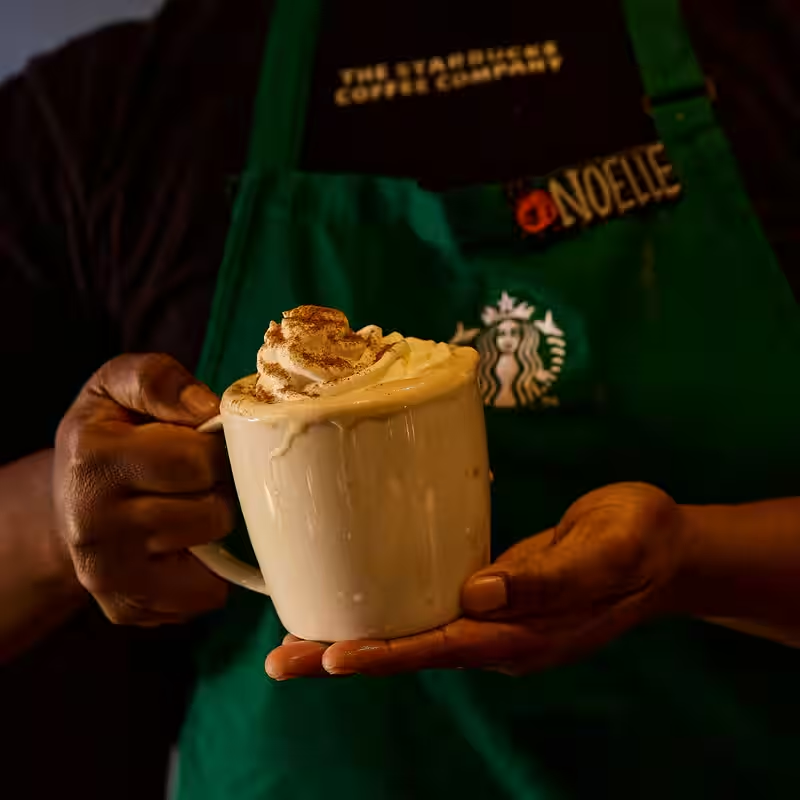Table of Contents
- Sales Up, Profits Down: The Starbucks Paradox
- What Drove the Modest Sales Increase?
- Why Did Profits Collapse by 85%?
- Store Closures and Corporate Layoffs Explained
- How Are Customers Reacting?
- What’s Next for Starbucks?
- Sources
Sales Up, Profits Down: The Starbucks Paradox
Starbucks reported a modest but meaningful uptick in sales for the quarter ending September 2025—its first year-over-year increase in nearly two years. Yet buried beneath that headline is a stark reality: net income plunged by a staggering 85%.
The coffee giant’s latest earnings reveal a company in transition—trying to win back customers with seasonal favorites and new menu items while simultaneously cutting costs through painful restructuring.
What Drove the Modest Sales Increase?
Starbucks credited its slight sales rebound to two key drivers:
- Pumpkin Spice Latte (PSL) nostalgia: The iconic fall drink returned with strong demand, especially among Gen Z and millennial customers.
- New product innovation: The rollout of protein-infused cold foam toppings gave cold beverages a nutritional boost, appealing to health-conscious consumers.
Globally, same-store sales—those at locations open at least 12 months—rose by 1%. Total revenue hit $9.6 billion, up 5.5% from the same period last year.
Why Did Profits Collapse by 85%?
Despite the sales lift, Starbucks’ bottom line took a massive hit due to one-time charges tied to strategic restructuring. These include:
- Costs associated with closing underperforming stores
- Severance packages from corporate layoffs
- Asset write-downs and lease termination fees
These non-recurring expenses slashed net income to just a fraction of last year’s figure—though executives stress the pain is part of a longer-term plan to streamline operations and refocus on core markets.
Store Closures and Corporate Layoffs Explained
In early 2025, Starbucks announced plans to shutter approximately 200 underperforming U.S. locations, primarily in urban centers where foot traffic hasn’t fully recovered post-pandemic. Simultaneously, the company cut hundreds of corporate roles in Seattle and other offices as part of a “flatter, faster” organizational redesign.
While these moves hurt short-term earnings, leadership argues they’ll improve long-term profitability and agility—especially as competition heats up from rivals like Dunkin’, Peet’s, and independent cafés gaining local loyalty.
How Are Customers Reacting?
On social media, loyal Starbucks fans expressed relief that the PSL and new cold foam options are resonating. “Finally, something besides sugar water,” one X user joked about the protein foam.
But others voiced concern over store closures in their neighborhoods. “My local Starbucks was the only place I could work remotely without judgment,” wrote a Reddit user from Chicago. “Now it’s a nail salon.”
Analysts note that while brand loyalty remains strong, Starbucks must balance innovation with accessibility—especially as inflation makes $7 lattes harder to justify for many households.
What’s Next for Starbucks?
CEO Laxman Narasimhan, who took the helm in 2023, has emphasized a “reinvention” strategy focused on digital ordering, store efficiency, and premium experiences. Upcoming initiatives include:
- Expansion of the “Starbucks Reserve” format in high-traffic cities
- AI-driven inventory and staffing tools to reduce waste
- Deeper integration of rewards and mobile ordering to boost frequency
Investors will be watching closely in early 2026 to see if these cuts translate into sustainable profit growth—or if the coffee giant is brewing more trouble than it’s solving.
Sources
The New York Times: Starbucks Reports a Modest Sales Increase in Latest Quarter




